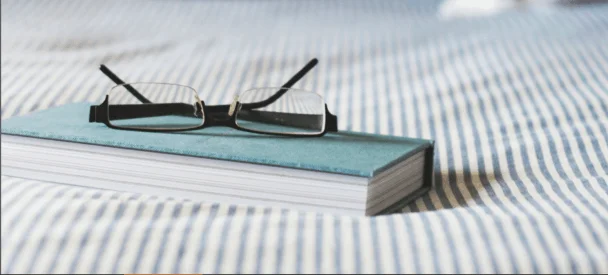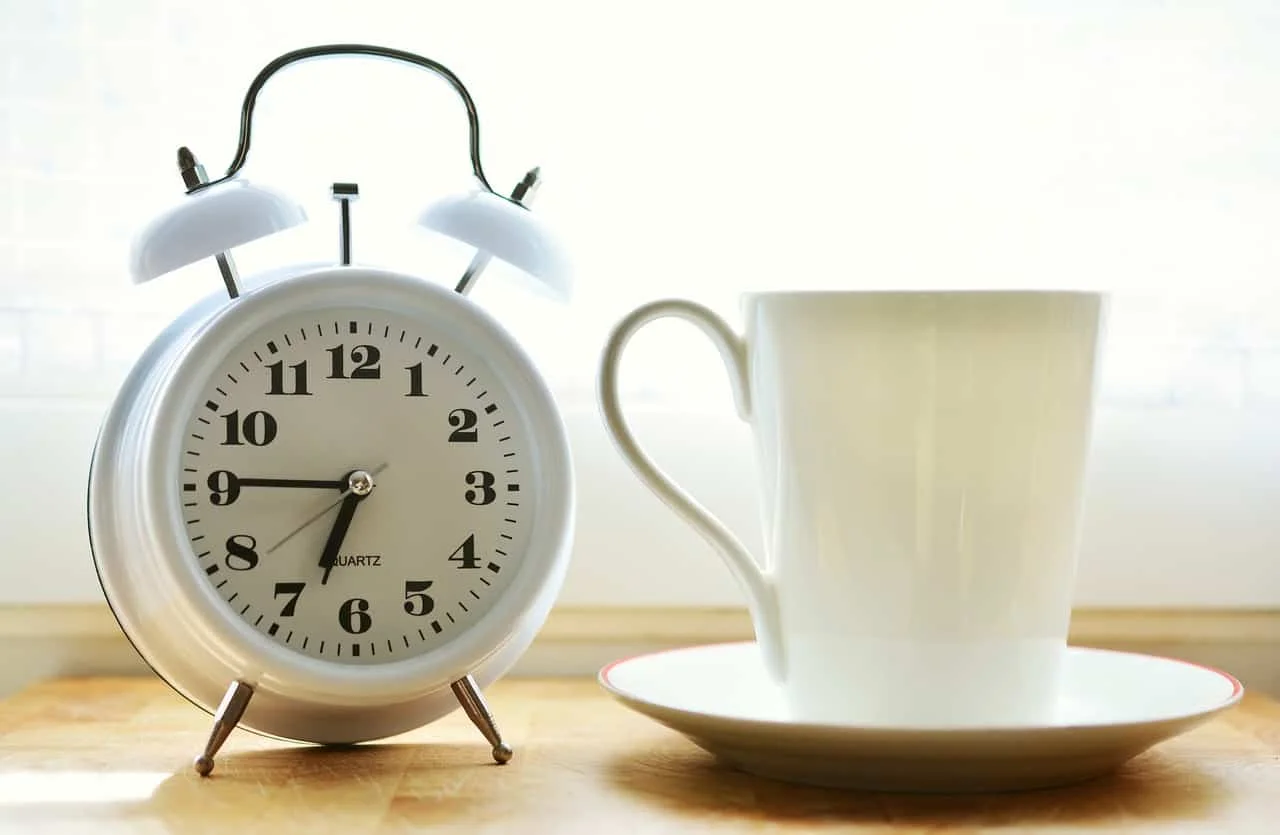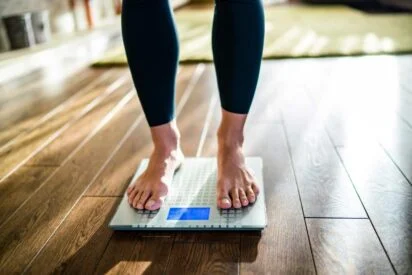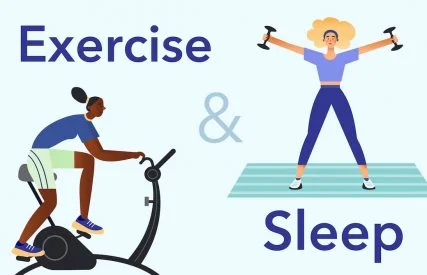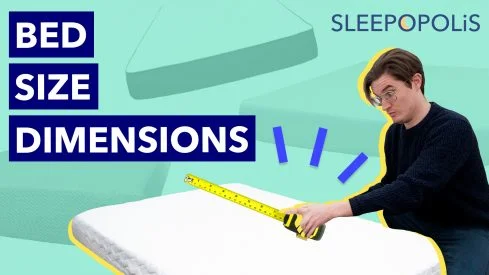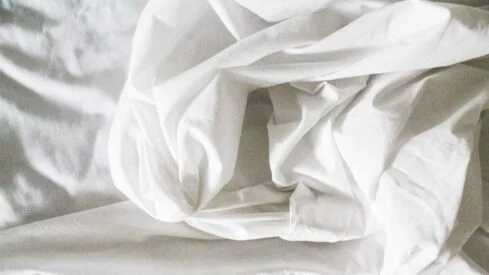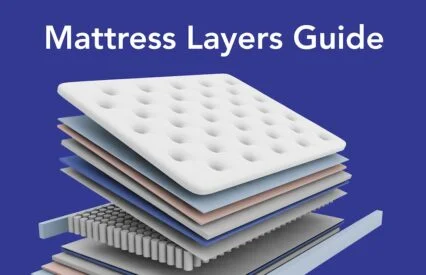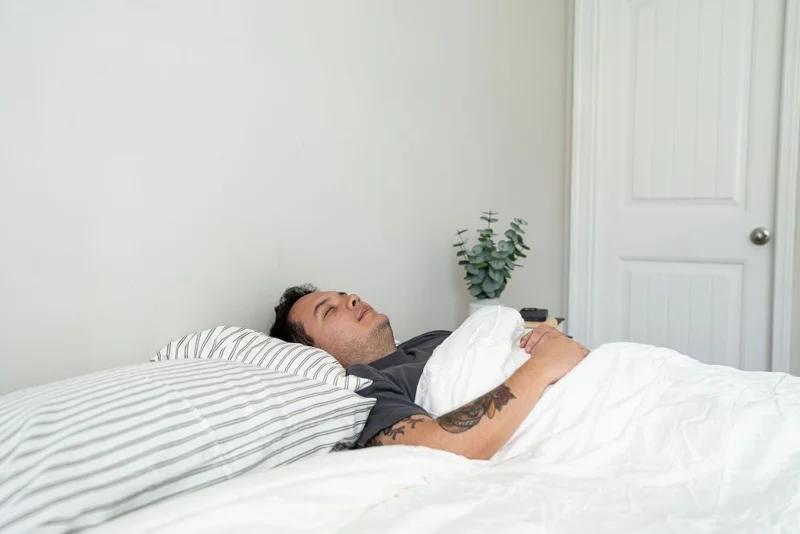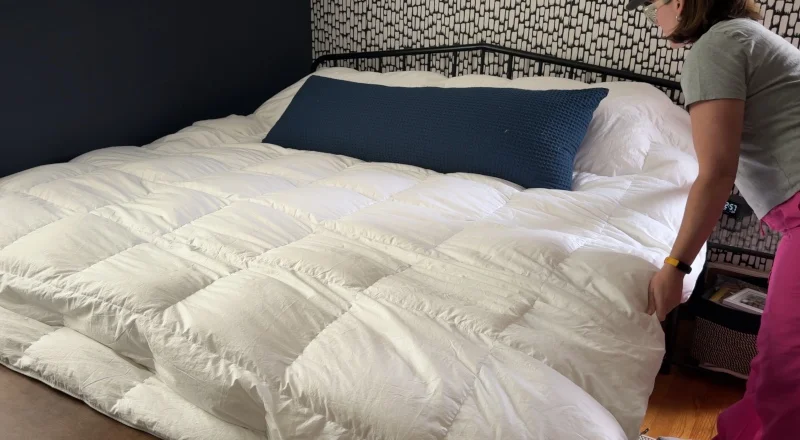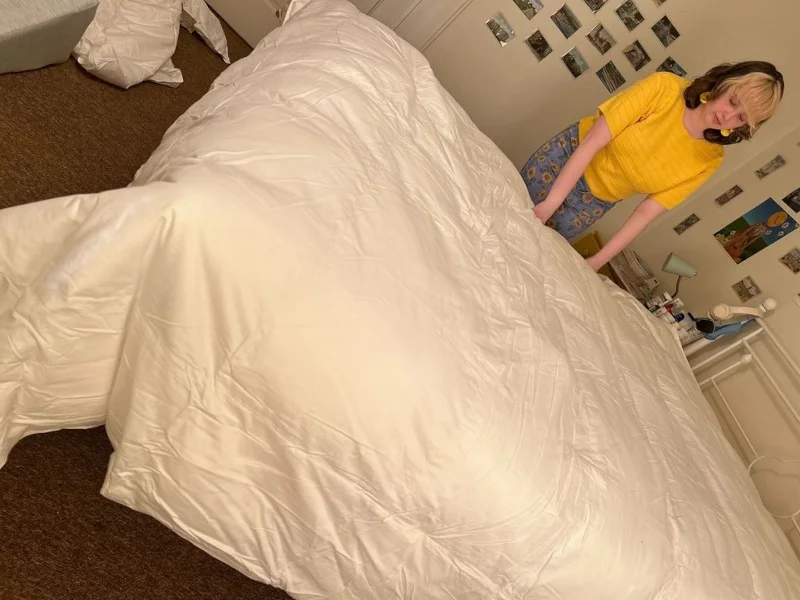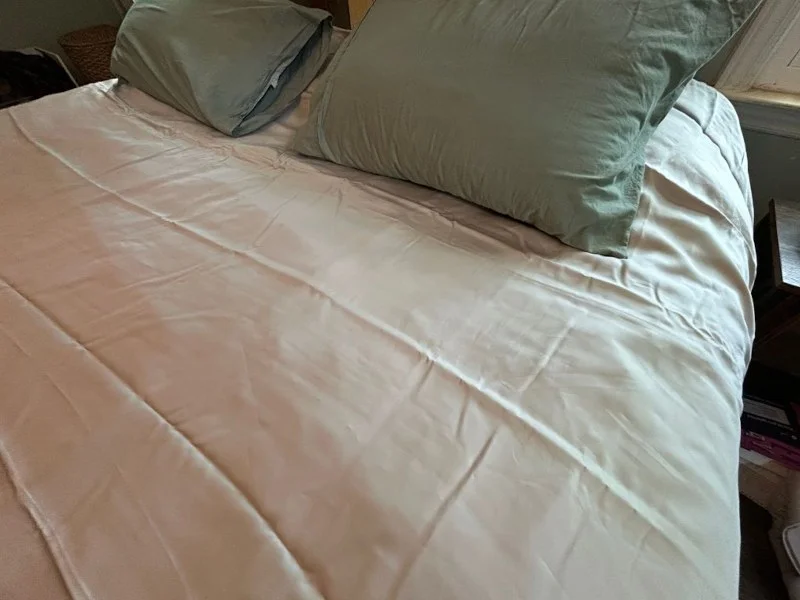After a long day, I love falling into bed and cozying up under my fluffy comforter. However, it has taken me a long time to find just the right one.
I am a certified sleep science coach who is part of a team that has helped over 60,000 people find the right mattress and bedding accessories. However, even I get overwhelmed by the sheer number of comforters available.
Our Chief Medical Advisor Dr. Raj Dasgupta, MD, FACP, FCCP, FAASM, reminds us that just as sleep is an individualized endeavor, so is finding the right sleep accessories. And there’s a lot to mull over before you decide. “When looking for a comforter, you should consider if you are a hot sleeper or someone who gets easily chilled, as this can help you decide on the weight and type of filling you should get,” he added.
To help you sort through the myriad of options, we had our product experts use several top-ranked comforters at home to evaluate how well they perform. From their testing notes, we’ve compiled a list of the best of the best.
Our Top Pics for the Best Comforters
- Cozy Earth Silk Comforter – Best Overall Comforter
- Brooklinen Down Alternative Comforter – Best for Hot Sleepers
- Coop Sleep Goods Adjustable Comforter – Best Down Alternative Comforter
- Buffy Breeze Comforter – Best Comforter on Amazon
Disclaimer: Please note that the content in this article is meant for informational purposes only and should not be construed as medical advice or serve as a substitute for seeing a medical professional regarding any sleep problems you may have. Please see your doctor regarding any urgent medical issues.
What I Looked for in Comforters
Our team evaluated many of the best comforters available for weeks in their homes. During this extended testing time, we noted their materials, construction, ability to regulate our temperature, and overall feel. Here’s why we felt these were the most important factors to consider:
- Materials: Comforters are available in a wide variety of materials. I paid special attention to what the cover and fill were made from, as this helps determine the weight, feel, and price.
- Weight: Hot sleepers and those living in warmer climates may prefer lightweight comforters with minimal filling to help keep them cool during sleep. However, those who like a cozier feel will want to look for a heavier comforter that protects sleepers from cold air.
- Feel: Given the amount of time you spend with your comforter, how it feels against your skin is an important aspect to consider. Although we recognize that feel is a subjective factor, we still carefully noted what the testers observed about it during their extended testing period.
- Price: Comforters come from a wide range of prices. I wanted to include choices that fit various budgets.
Cozy Earth Silk Comforter – Best Overall Comforter
Cozy Earth Silk Comforter
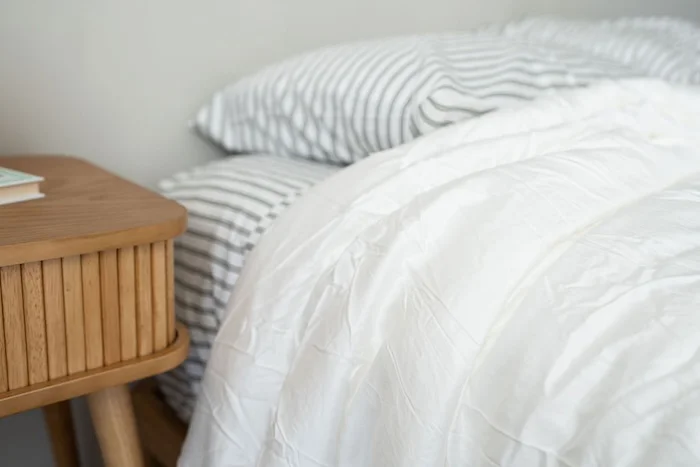
This comforter from Cozy Earth is made with a soft silk that gives sleepers a luxurious sleeping experience, with a bamboo viscose shell that helps regulate temperature.
Sleepopolis Score
5.00 / 5
Brooklinen Down Alternative Comforter – Best for Hot Sleepers
Brooklinen Down Alternative Comforter
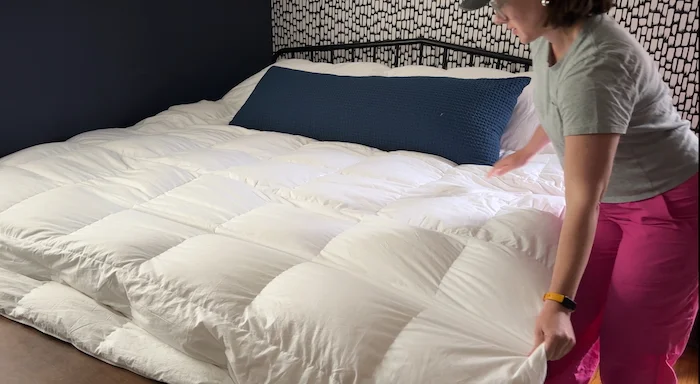
The Brooklinen Down Alternative comforter is available in three weights: lightweight, all-season, and ultra-warm. It features a 100 percent cotton shell and is filled with recycled PET fibers.
Sleepopolis Score
4.50 / 5
Coop Sleep Goods Adjustable Comforter – Best Down Alternative Comforter
Coop Sleep Goods Adjustable Comforter
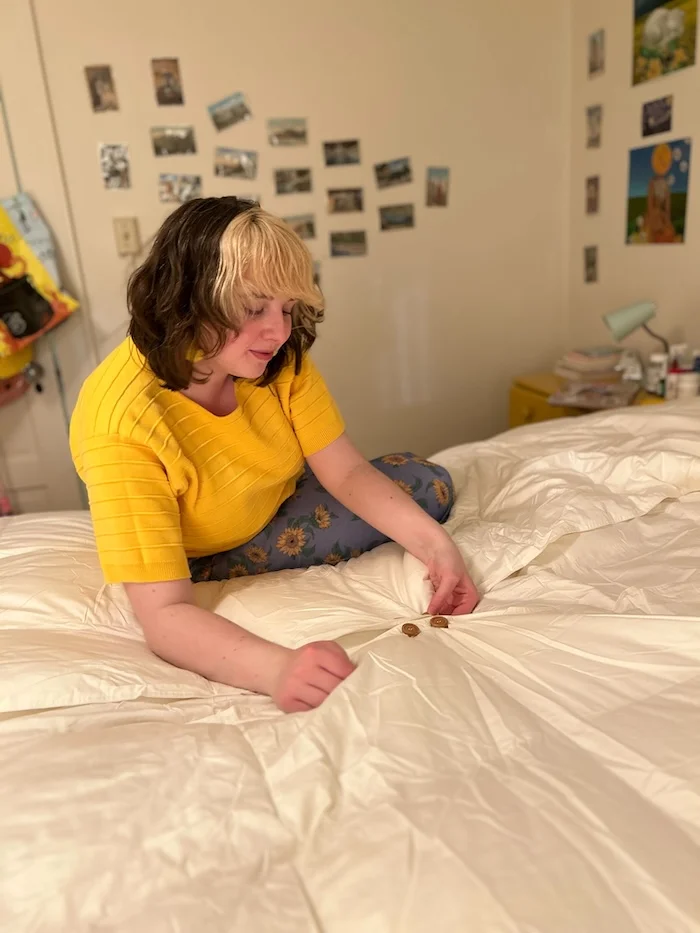
If you need different levels of thickness throughout the seasons, this comforter gives you full adjustability.
Sleepopolis Score
5.00 / 5
Buffy Breeze Comforter – Best Comforter on Amazon
Buffy Breeze Comforter
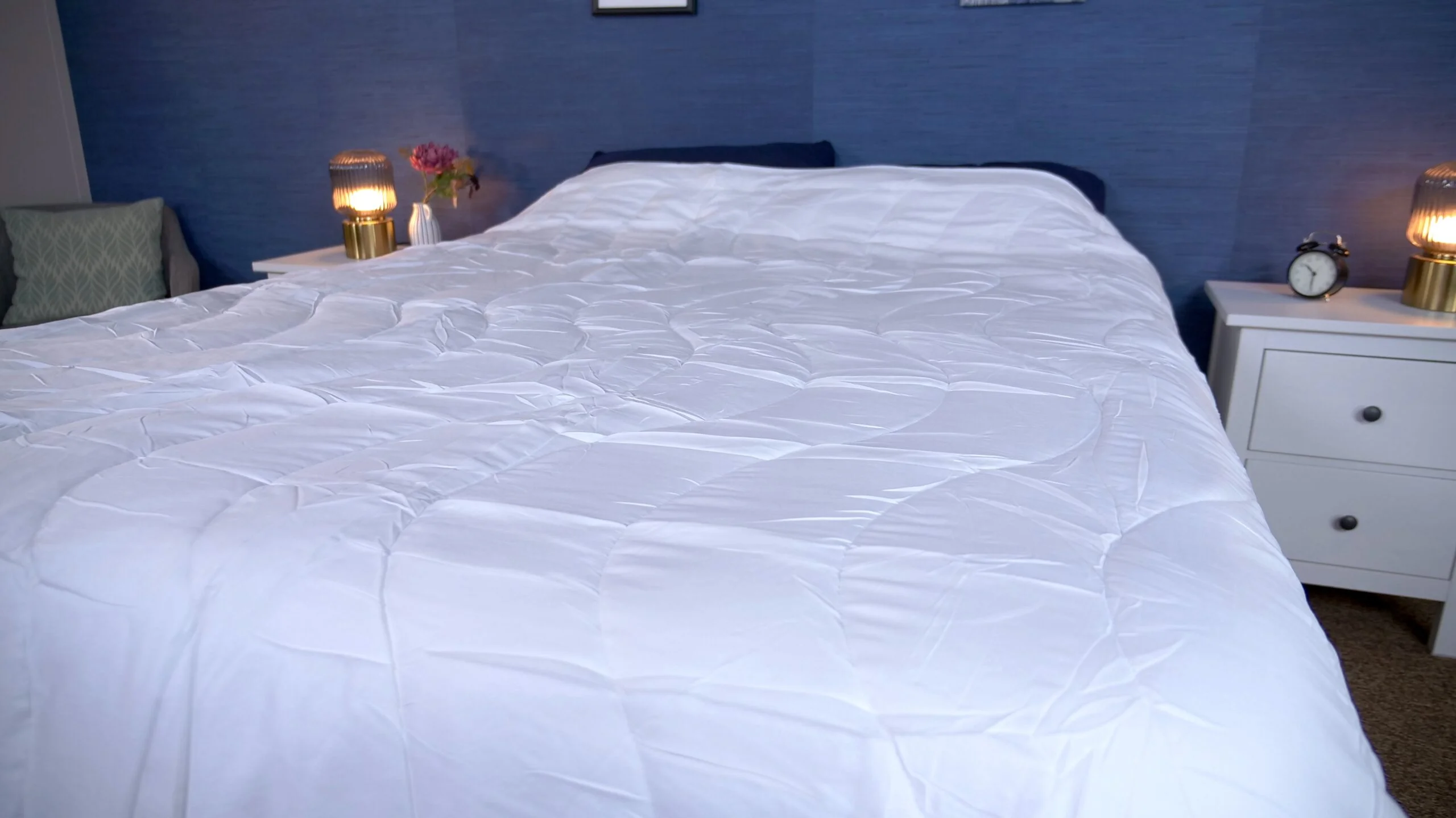
One of the most popular names in online bedding is the new Buffy Breeze comforter. It’s made from eco-friendly plant based and recycled materials and has a great cooling feel.
Sleepopolis Score
4.80 / 5
Other Comforters I Considered
Considering that we test so many high-quality products, it’s understandable that not all of them can make our best-of lists. However, if you didn’t find what you were looking for in the comforters we reviewed, we wanted to provide you with a couple of additional options that you may like.
Riley White Goose Down Comforter
The Riley White Goose Down Comforter would make a durable addition to your bed. However, it just missed our cut because our tester, who normally sleeps hot, stated that this all-season comforter could have used a “smidge more filling.” Given this evaluation and that a queen-sized comforter will set you back over $500 when it is not on sale, we decided to leave this one on the cutting room floor.
Parachute Down Duvet Insert
I sleep with the Parachute and absolutely love it! So, why would I leave it off this list? My husband refuses to sleep under it. I think that it is the perfect weight and it keeps me comfortable while sleeping in a bedroom that is the temperature of a morgue. However, my husband says that he feels “smothered and like he is going to sweat to death.” Therefore, I left it off as it may not appeal to those who sleep hot.
How We Picked and Tested These Comforters
During our lengthy at-home testing period, we asked our product experts to evaluate several factors, including their overall experience, the durability of the materials, how they felt sleeping on it, and if they thought the price was justified.
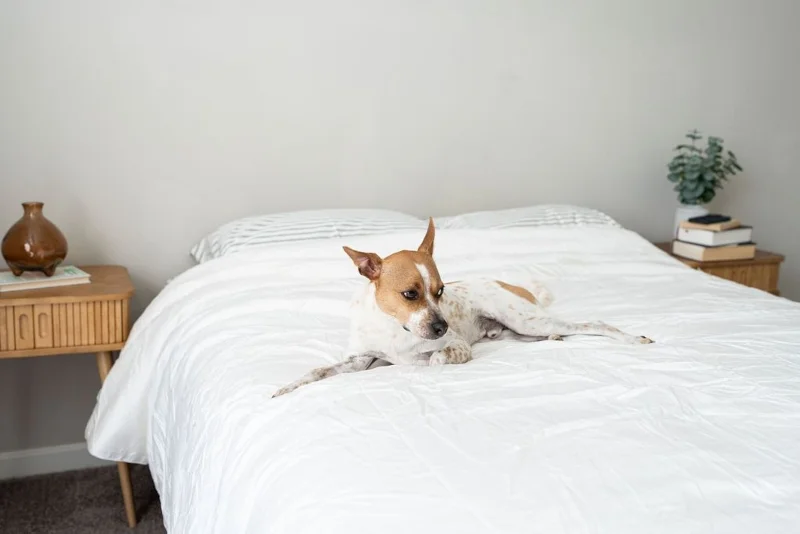
Materials
The type of materials used in your comforter directly affects how it feels against your skin, its durability, and its ability to regulate your temperature. Sleepers who run cold should look for insulating fabrics like fleece, flannel, microfiber, or cotton sateen. Meanwhile, those looking to sleep cool are better suited to breathable materials like Tencel, cotton percale, or products made from bamboo. Additionally, individuals with sensitive skin or allergies may want to prioritize hypoallergenic fabrics, such as down alternative fillings.
Fill
You should pay special attention to the comforter’s internal fill. From polyester to natural down, comforters can be stuffed with many different materials, and it’s best to research the one you’re looking at before you make your purchase. Perhaps the most popular comforters (and the majority in this roundup) are filled with either real down or down alternative. While they sound similar, these materials differ significantly in terms of feel and price. The fill will also help determine whether you get a cozy, heavy comforter or a lightweight cooling one.
Feel
Since feel is a subjective category to evaluate and personal preferences are, well, just that — personal — we used several different testers so that we could gather a variety of opinions on how each comforter felt. We included many best sellers with various shell materials, fill power, thread count, and different designs, including baffle and box stitching. Those looking for warm, cozy comfort will want to opt for heavyweight goose down comforters; whereas, hot sleepers will find comfort in bedding made with bamboo, percale, or down alternatives.
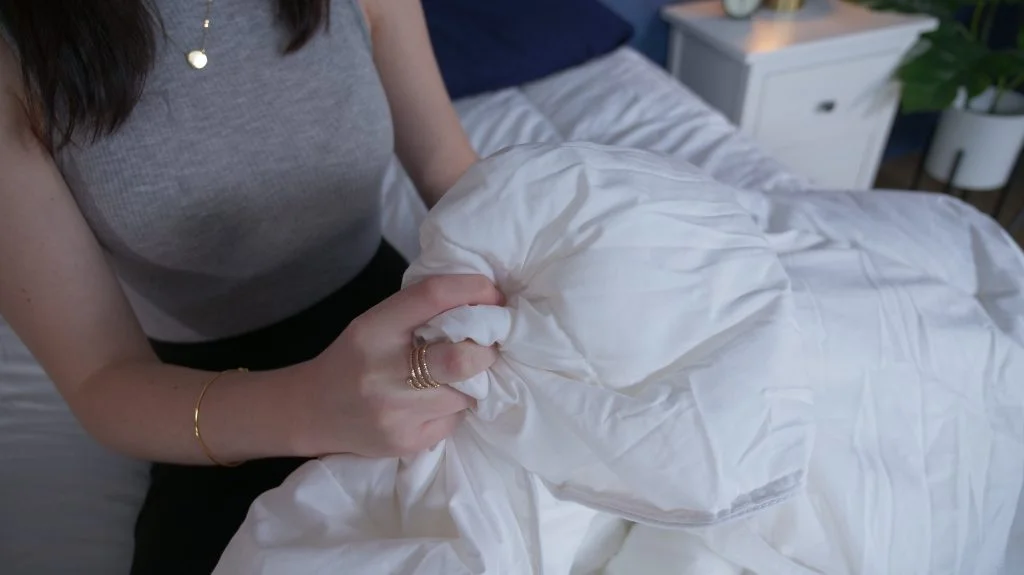
Price
The price of a comforter depends on the materials used to make it. Keep in mind that real down tends to be more expensive than down alternative, and the cost can fluctuate according to the popularity of the bedding brand itself. That said, we suggest you always take note of trial periods and return policies, as these things can ease the purchasing pressure a bit. Not to mention a generous trial/return policy inspires confidence in the consumer and lets you know that the company proudly stands by its product.
What to Consider
While our testing methodology covers a comforter’s materials and performance, there are other factors to consider when shopping for a comforter.
Care
Wash care varies from product to product and totally depends on the materials used to make it. If we were you, we’d check the exact care instructions before making your purchase. It would be a shame to buy a new comforter only to find out that it requires more maintenance than you’re willing to give.
Style
Comforters come in a variety of styles, many of which feature printed patterns or bright colors. In fact, comforters can often be purchased as part of a “bed-in-a-bag” ensemble, which includes matching pillowcases and sheets. If you’re looking to break away from plain white bedding, take some time to decide what you want your comforter to look like. This will narrow your search, as some brands only offer comforters in solid white.
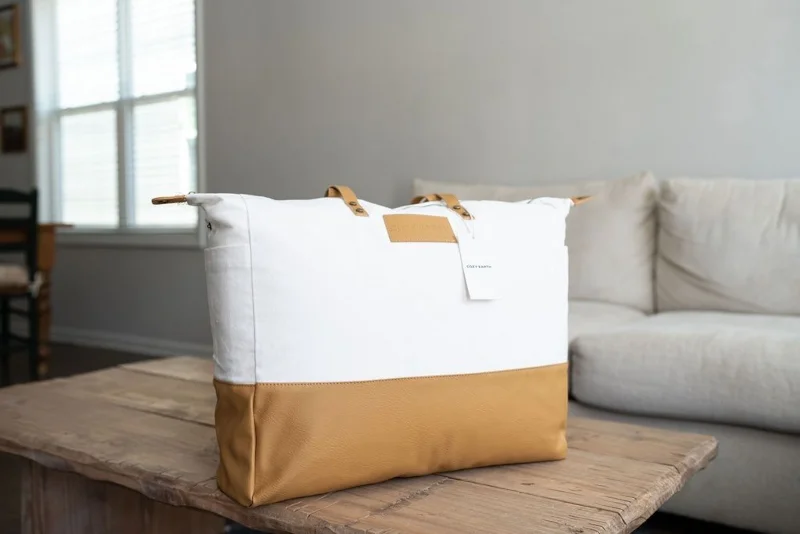
Allergies
For those with allergies, all comforters are not created equal. Our Chief Medical Advisor Dr. Raj Dasgupta said, “Down comforters may cause allergy issues for some folks. Those with allergies will want to look for a comforter made with a down alternative.”
Cover
You’ll likely want to consider a cover for your comforter. This allows for easy care and can prolong the life of your bedding. Those looking to optimize the cooling prowess of their comforter can add a cover made from bamboo, while those wanting additional coziness may opt for flannel. However, adding a duvet will also increase your price.
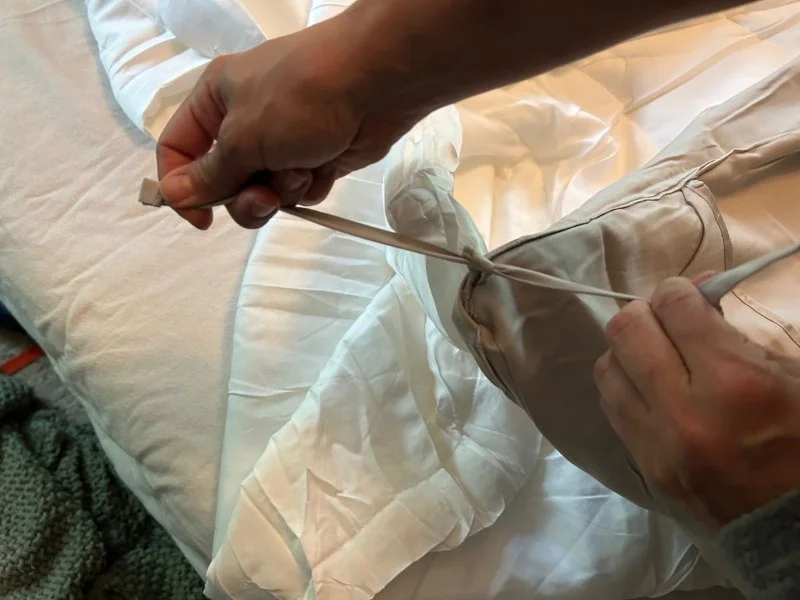
FAQs
What is a comforter?
A comforter is basically a thick blanket that covers your entire bed and keeps you warm at night. It typically goes on top of your flat sheet and can be layered with other blankets as well.
What is the difference between a comforter and a duvet?
Comforters and duvets have a lot of similarities, but there are some key differences that set them a part. The main difference is a comforter can be used by itself and a duvet usually acts as an insert and requires a cover. However, some duvets can stand alone, too. To learn more about the differences and similarities, check out our duvet vs comforter article.
How is a comforter different than a blanket?
A blanket usually consists of just one layer of material. A comforter can be made of multiple layers and typically has some sort of fluffy filling, such as down, cotton, and polyester.






